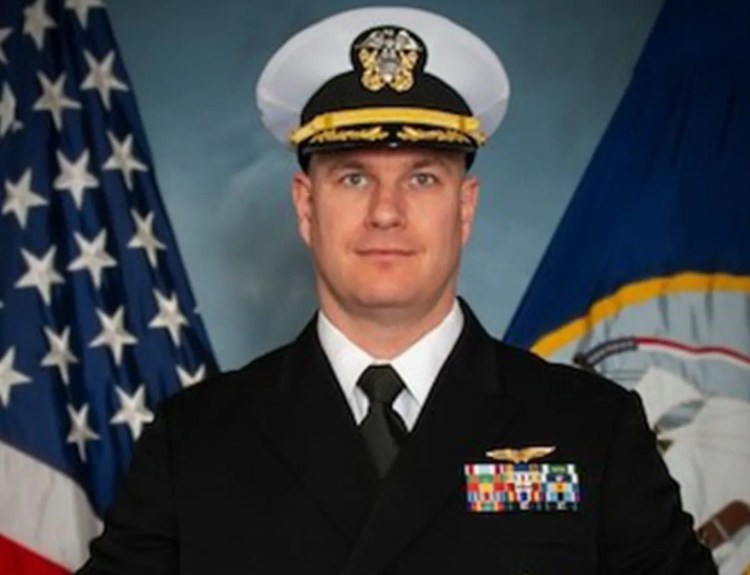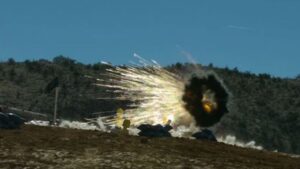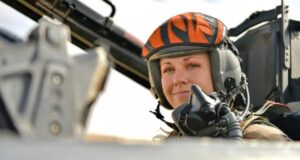Commander Diehl Fired
On November 22nd, 2024, the U.S. Navy relieved Commander Charles Diehl of his duties as the commanding officer of Airborne Command & Control Squadron 115 (VAW-115). Diehl has assumed command of the unit in May 2024.
This decision marks the third instance in November where the Navy has removed a commanding officer from their position.
The Navy has not publicly disclosed the specific reasons for Commander Diehl’s removal. However, as we’ve noted multiple times in the past, such actions typically result from a loss of confidence in an officer’s ability to lead, which can stem from various factors, including misconduct, failure to meet performance standards, or lapses in judgment.
Following his dismissal, Diehl has been temporarily reassigned to the Airborne Command and Control Logistics Wing based in Point Mugu, California. Commander Randall Fields, the former commanding officer of VAW-116, has been temporarily assigned to take over leadership responsibilities for VAW-115.
The “Liberty Bells”
VAW-115, known as the “Liberty Bells,” is a critical component of the Navy’s airborne early warning and control capabilities. The squadron operates the E-2D Advanced Hawkeye aircraft, providing all-weather airborne early warning, command and control functions, and surveillance operations. The unit’s mission is vital for maintaining situational awareness and ensuring the safety of naval operations.
The squadron has a rich history dating back to its establishment on April 20, 1967, when it was originally designated a Carrier Airborne Early Warning Squadron to an Airborne Command and Control Squadron. During the Vietnam War, it was deployed to the Gulf of Tonkin between May 1971 and April 1973. In the Cold War, it participated in rescue operations following the Korean Airlines Flight 007 shootdown in 1983. They flew 179 combat missions during Operation Desert Storm in 1991, and they supported Operation Iraqi Freedom in 2003, flying over 363 hours in support of ground forces.
Importance of the Advanced Hawkeye
The E-2D Advanced Hawkeye, developed by Northrop Grumman for the U.S. Navy, is a carrier-based airborne early warning and command-and-control aircraft. Known for its critical role in naval aviation, the E-2D enhances surveillance, detection, and tracking capabilities, making it indispensable in various operational environments. Designed to serve as the “eyes in the sky” for carrier battle groups, this aircraft provides unmatched situational awareness to naval and joint forces alike.
At the heart of the E-2D’s capabilities is the APY-9 radar system, which combines mechanical and electronic scanning for unparalleled detection and tracking of modern threats. This radar system enables the aircraft to spot adversaries at greater distances and with greater precision than previous systems. The cockpit of the E-2D has also been modernized with a glass cockpit, allowing the pilot or co-pilot to perform tactical mission functions. Additionally, its advanced mission processing system integrates sensor data from both onboard and external sources, providing a complete and coherent tactical picture to commanders. One of the latest upgrades to the E-2D is its aerial refueling capability, which dramatically increases its operational endurance. With this enhancement, the aircraft can stay in the air longer, ensuring extended coverage during critical missions.
Commander Diehl Fired
On November 22nd, 2024, the U.S. Navy relieved Commander Charles Diehl of his duties as the commanding officer of Airborne Command & Control Squadron 115 (VAW-115). Diehl has assumed command of the unit in May 2024.
This decision marks the third instance in November where the Navy has removed a commanding officer from their position.
The Navy has not publicly disclosed the specific reasons for Commander Diehl’s removal. However, as we’ve noted multiple times in the past, such actions typically result from a loss of confidence in an officer’s ability to lead, which can stem from various factors, including misconduct, failure to meet performance standards, or lapses in judgment.
Following his dismissal, Diehl has been temporarily reassigned to the Airborne Command and Control Logistics Wing based in Point Mugu, California. Commander Randall Fields, the former commanding officer of VAW-116, has been temporarily assigned to take over leadership responsibilities for VAW-115.
The “Liberty Bells”
VAW-115, known as the “Liberty Bells,” is a critical component of the Navy’s airborne early warning and control capabilities. The squadron operates the E-2D Advanced Hawkeye aircraft, providing all-weather airborne early warning, command and control functions, and surveillance operations. The unit’s mission is vital for maintaining situational awareness and ensuring the safety of naval operations.
The squadron has a rich history dating back to its establishment on April 20, 1967, when it was originally designated a Carrier Airborne Early Warning Squadron to an Airborne Command and Control Squadron. During the Vietnam War, it was deployed to the Gulf of Tonkin between May 1971 and April 1973. In the Cold War, it participated in rescue operations following the Korean Airlines Flight 007 shootdown in 1983. They flew 179 combat missions during Operation Desert Storm in 1991, and they supported Operation Iraqi Freedom in 2003, flying over 363 hours in support of ground forces.
Importance of the Advanced Hawkeye
The E-2D Advanced Hawkeye, developed by Northrop Grumman for the U.S. Navy, is a carrier-based airborne early warning and command-and-control aircraft. Known for its critical role in naval aviation, the E-2D enhances surveillance, detection, and tracking capabilities, making it indispensable in various operational environments. Designed to serve as the “eyes in the sky” for carrier battle groups, this aircraft provides unmatched situational awareness to naval and joint forces alike.
At the heart of the E-2D’s capabilities is the APY-9 radar system, which combines mechanical and electronic scanning for unparalleled detection and tracking of modern threats. This radar system enables the aircraft to spot adversaries at greater distances and with greater precision than previous systems. The cockpit of the E-2D has also been modernized with a glass cockpit, allowing the pilot or co-pilot to perform tactical mission functions. Additionally, its advanced mission processing system integrates sensor data from both onboard and external sources, providing a complete and coherent tactical picture to commanders. One of the latest upgrades to the E-2D is its aerial refueling capability, which dramatically increases its operational endurance. With this enhancement, the aircraft can stay in the air longer, ensuring extended coverage during critical missions.
The E-2D Advanced Hawkeye is often referred to as the “digital quarterback” for carrier battle groups because of its ability to coordinate multiple elements in a theater of operations. Its mission set includes airborne early warning, battle management, and theater air and missile defense. The aircraft also supports surface surveillance, air interdiction, search and rescue, and close air support coordination. Additionally, it acts as a communications relay, ensuring seamless communication between units on land, at sea, and in the air. The Hawkeye’s role in theater air and missile defense is particularly vital, as it provides critical data to help defend against evolving threats in littoral, overland, and open sea environments. Its ability to deliver real-time, actionable intelligence to joint forces and first responders underscores its importance in modern military operations.
The E-2D’s performance is as impressive as its technology. With a service ceiling of 25,600 feet, the aircraft can operate effectively at high altitudes, offering a wide surveillance range. It boasts a level flight airspeed of 303.5 knots below 18,000 feet, allowing it to respond quickly to evolving situations. These performance characteristics, combined with its advanced systems, make the E-2D a cornerstone of naval aviation.
The E-2D Advanced Hawkeye remains a key element of the U.S. Navy’s air defense and battle management strategy. By providing enhanced battlespace awareness and actionable intelligence, the aircraft supports a wide range of missions critical to the success of naval operations. As threats evolve, the E-2D continues to adapt with new upgrades and capabilities, ensuring it remains at the forefront of naval aviation for years to come.
In essence, the E-2D Advanced Hawkeye is not just an aircraft—it’s a force multiplier, enabling the Navy to maintain dominance in the air and on the seas.
Effects of Removing a Commanding Officer
The removal of a commanding officer can have significant implications for a squadron’s morale and operational effectiveness. It often necessitates a swift transition to new leadership to maintain continuity and uphold mission readiness. The Navy typically appoints an interim commander while a permanent replacement is selected.
This incident underscores the Navy’s commitment to maintaining high standards of leadership and accountability within its ranks. The service has a history of relieving commanding officers when they fail to meet the expectations of their positions. For instance, in 2013, a former command sergeant major at Walter Reed Army Medical Center was sentenced to six months imprisonment and demoted for falsifying his record and wearing unauthorized awards and decorations.

The Navy’s decision to relieve Commander Diehl reflects its dedication to upholding the integrity and effectiveness of its leadership. While the specific circumstances of his removal remain undisclosed, the action aligns with the service’s broader efforts to ensure that those in command positions exemplify the highest standards of conduct and performance.
Moving Forward
As the Navy moves forward, it will continue to emphasize the importance of accountability and leadership excellence. The swift action taken in this case serves as a reminder of the responsibilities inherent in command positions and the Navy’s unwavering commitment to its core values.
This is a developing story. When SOFREP learns the reasons for Commander Diehl’s dismissal, we will report them back to you.



